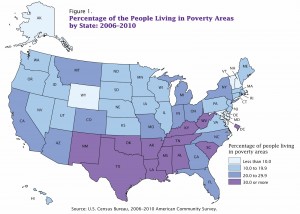As a general rule of development, the progression of skills usually improve overtime. However, language learning is one domain where the abilities of infants far exceeds that of adults. Research examining young children’s early processing of language have provided insight into timing and environmental contexts that promote linguistic development. Prior to 6 months, infants possess a universal perceptual ability to distinguish phonetic units of all languages. Over the following 6 months, infants become more and more attuned to the phonetic units specific to their native language. This perceptual narrowing provides an explanation for why “rake” and “lake”, for example, sound similar to an adult native Japanese speaker. Using EEG (electroencephalography), researchers have found that increased perception in native-language phonetic units at 7.5 months are also associated with higher language abilities between 18-30 months of age. Conversely, better nonnative phonetic perception are associated with poorer future language abilities. Phonemic learning for basic perceptual units of a given language provides strong evidence that the brain becomes “committed”, as it were, to the language environment of the infant. The critical period for phonetic learning prior to 12 months of age is a crucial requisite for syntactic learning between 18 and 36 months of age.
Exposure to spoken language is a corollary for perceptual narrowing for phonetic units. As such, age is not the only important factor in linguistic development. Research has shown that by age 3, children with parents of higher socioeconomic status (SES) would have heard words millions more times than children of lower SES families. The relative dearth of language exposure often leads to a language-skill gap by school-age years between children of lower-income, less-educated parents and their more privileged peers. New research by Dr. Anne Fernald of Stanford University has shown that the language-gap is apparent at 18 month of age. The study found that children an SES-based difference in speed to identify pictures of simple words (e.g. “dog” or “ball”) faster among 18 month-old children. By 2 years of age, children of wealthier households (median income per capita = $69,000) had learned 30% more words than children from low-income homes (median income per capita = $23,900). What is even more discouraging is that early vocabulary and language learning is related to reading abilities suggesting additional academic SES-based difficulties down the road.
Fortunately, SES is not deterministic and there have been recent measures to directly address what early language researchers have known for nearly 50 years. The Obama Administration is offering state grants through its Race to the Top program to support early childhood education. President Obama has also called for the federal government to match state spending on preschools (although negotiations with Congress are still in the works).
While it is reassuring to learn that policy change is happening in response to these language-gap findings, the practical implementation of enriching pre-school programs among low-SES communities is obviously expensive and could take many years to go into effect. According to the Southern Education Foundation, low-income children comprise the majority of students in public schools of 17 states across the nation.
What is faster enacting, and possibly more efficient in the long-term, is parent education. Even among low-income families, parents who verbally engage with their children more frequently have enhanced vocabulary. Social interaction is key because mere exposure to spoken language is not sufficient for learning. Infants, even in the critical period for language learning, cannot learn new words as well by watching a televised language intervention than a live language intervention. Our current society is extremely embedded in technological tools and children are being exposed to iPads and other tablets at younger and younger ages. There’s no doubt that highly educational apps exist for young children. But for initial language learning, nothing beats just child-directed talking.
More reading:Language-gap study bolsters a push for pre-K programs
Talking to Children Matters Early Language Experience Strengthens Processing and Builds Vocabulary
